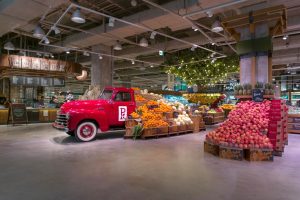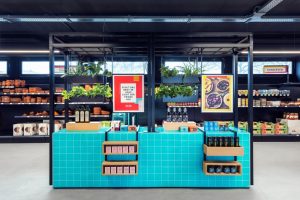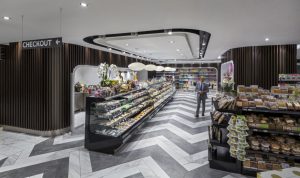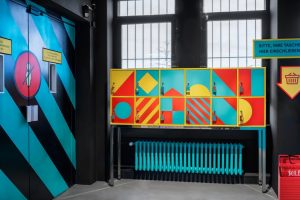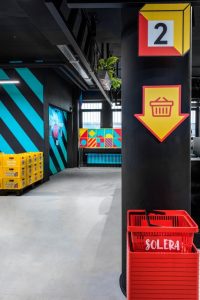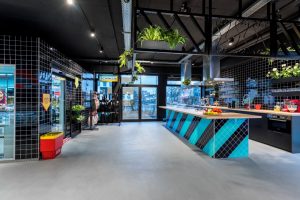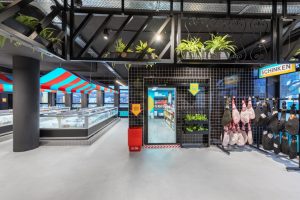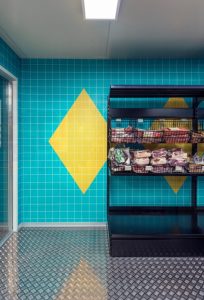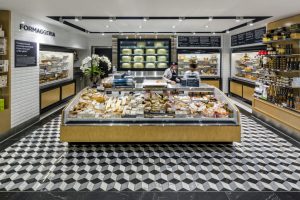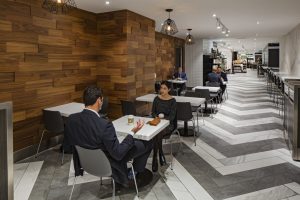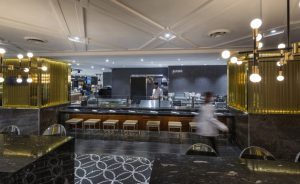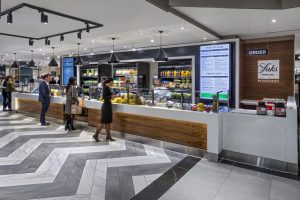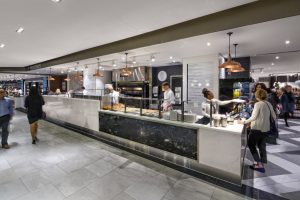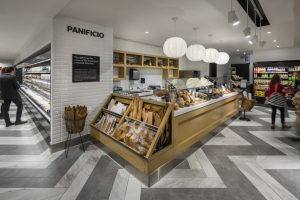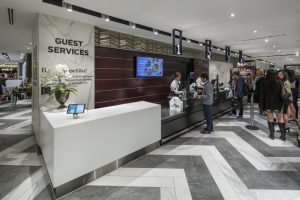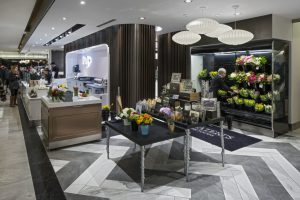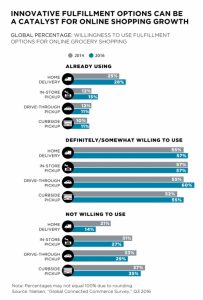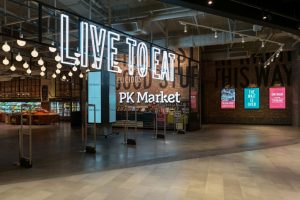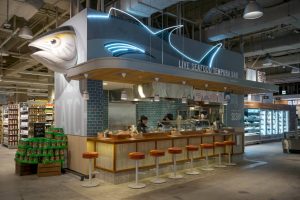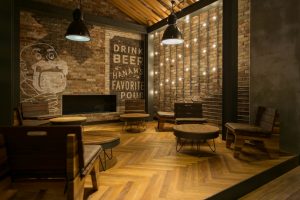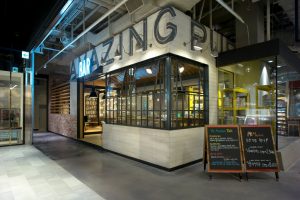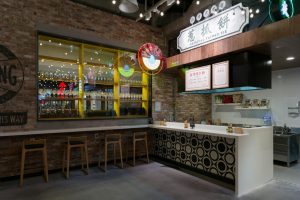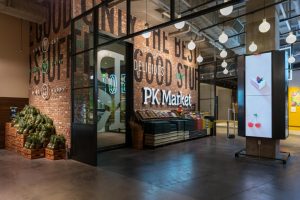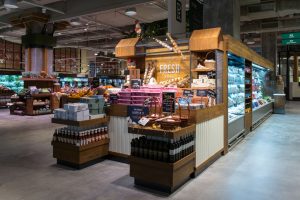The news of Amazon.com Inc.’s (Seattle) plan to purchase Austin, Texas-based Whole Foods Market Inc. for a staggering $13.7 billion rocked the retail industry this past June. And just a little less than a year prior, Walmart Stores Inc. (Bentonville, Ark.) acquired Hoboken, N.J.-based Jet.com for $3.3 billion. So what will it all mean for the future of grocery shopping?

While purchasing groceries online isn’t yet common in the U.S., it is a growing trend, with 24 percent of shoppers in a recent Nielsen (New York) study reporting they had purchased packaged groceries online at least once. And according to a 2017 study, Nielsen and the Arlington, Va.-based Food Marketing Institute project that, by 2025, online grocery spending could reach 20 percent of the overall market share, representing $100 billion in annual consumer sales.
These findings show that in-store grocery shopping has not become irrelevant to the modern shopper. If that projection stays on track, 80 percent of the market (or $400 billion in sales) will still belong to brick-and-mortar retailers – the ones that will be charged with garnering customer attention and keeping them coming back for more.

Photography: Luis Beltran, Valencia, Spain
Advertisement
FROM SPAIN TO SOLERA
Founded by Pepa Bascón to bring a taste of her home country to the region, Cologne, Germany-based specialty grocer Solera – whose interior was designed by creative consultancy Masquespacio (Valencia, Spain) – opts for a fully immersive in-store experience, rather than dabbling in online orders. (It does, however, offer home delivery services.)
“Solera isn’t a gourmet supermarket and is mainly focused on bulk sales,” says Christophe Penasse, co-founder and marketing manager, Masquespacio. About 95 percent of its goods are “typical” Spanish products from Spanish brands, while another 5 percent are influenced by South America. “Having massive quantities of brands and types of goods is more important than offering something exclusive, so we had to find the balance of a 70-percent functional and 30-percent emotional space.”
The balance was accomplished by incorporating vibrant color schemes and patterns on black backgrounds, referencing the brand’s Spanish heritage without being too literal.
The space is divided into shop-in-shops and features a demonstration kitchen where Solera can share Spanish recipes with clients, offer workshops or answer questions about Spanish gastronomy.
“For most stores, it isn’t enough anymore to just sell interesting goods,” Penasse says. “Stores should evolve to become a continuous experience for the clients. This can be done through [offerings] like sushi corners, workshops and other elements that could offer something different than just a rack with some goods.”

Advertisement
Photography: Philip Castleton, Toronto
EATING ETIQUETTE
Food halls are an almost wholly separate entity from typical grocery stores and supermarkets and live in their own specialty food realm. Pusateri’s Fine Foods (Toronto), a high-end grocer and specialty food purveyor, partnered with Saks Fifth Avenue (New York) to operate the department store’s food halls throughout Canada.
In this location in downtown Toronto, on the basement/ground level (with entry to PATH, the mostly walkable underground public corridor, with subway access), the food hall comprises a wide range of departments and services, including a champagne bar and even a “vegetable butcher,” a specialist who will chop squash, fruits or greens for customers.
Like Saks Fifth Avenue, Pusateri’s also focuses on luxury service and caters to a high-end customer base, so the materials incorporated into the space convey a sense of decadence and style. Each section inside the food hall has its own distinct flavor, unified through the use of herringbone-patterned flooring.
Pusateri’s sets itself apart from similar competitors with its artisanal and imported fresh fare. “There’s a heightened level of health consciousness and social consciousness, [and] it’s very important that grocers are transparent in sharing the sources of their products,” says Debbie Kalisky, associate, retail development, GH+A (Montréal).
Additionally, she explains, engaging customers keeps the journey exciting, either with in-store tastings or by inviting specialists who can explain the nuances of certain products.
Advertisement
To keep digital-savvy customers happy, this location, along with others, offers a mobile order and pay program (a buy online, pick up in store model), as well as the ability to hire a personal shopper to do the browsing for you.

Photography: Kevin Foster O'Donnell, Los Angeles
WHEN EAST MEETS WEST
Part of the retail conglomerate Shinsegae Group, and operated by E-Mart, PK Market (Seoul, South Korea) wanted to open an immersive experience that took its cues from Western culture, specifically the U.S.
Kevin Foster O’Donnell, principal, creative director, Thread Collaborative (Los Angeles), worked closely on the project and explains that this design style was unusual for the region. “They have hypermarkets similar to the U.S., like Walmart or Target … they also have bulk or club retailers, and food halls that are typically in department stores,” he says, but reportedly nothing like the average Kroger or Whole Foods Market stores.
The design team faced many unusual challenges, including customers’ reactions to unwrapped produce and meat (in South Korea, those items are almost always plastic-wrapped). Real wood is hard to source in South Korea, so instead, teak was used in the interior to capture an authentic Western aesthetic.
Each section has its own unique sights, like the eye-catching fish prop in the seafood area, or the authentic 1950s Chevy pick-up truck parked in the produce section that communicates an “American Heartland” theme.
To help build the brand’s social media presence, a big goal of the project was making sure there were obvious “Instagrammable” moments throughout the store. For example, the neon-illuminated words “LIVE TO EAT,” in place of the location’s name, at the entry, create a memorable moment for shoppers.

GOING TO MARKET
Experiential concepts for groceries and supermarkets will remain imperative in driving consumer traffic to combat the potential loss of in-store sales to online delivery. An advantage for physical grocers are their fresh food options, and according to a 2017 FMI study, 36 percent of shoppers surveyed reported selecting their primary store based on the breadth and quality of fresh foods offered. So despite competitive challenges on the horizon – like Lidl (Neckarsulm, Germany) entering the U.S. market, behemoth mergers, or an increase in online market share – people need to eat, and grocery stores will keep fighting for relevance by leveraging design, and more importantly, in-store experiences.
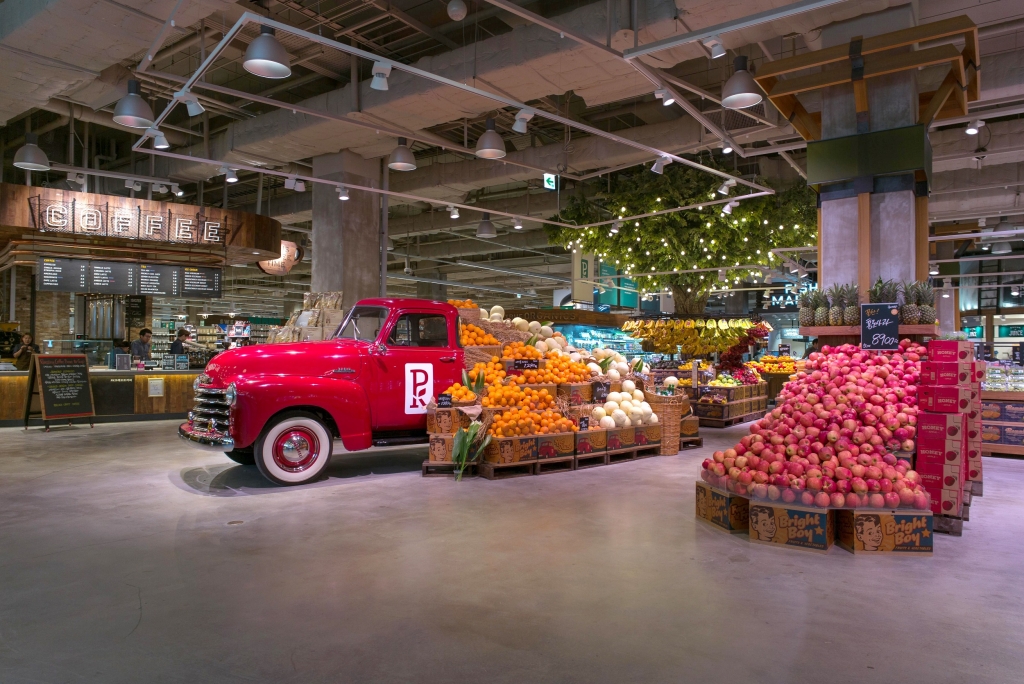

 Photo Gallery2 days ago
Photo Gallery2 days ago
 Headlines1 week ago
Headlines1 week ago
 Headlines2 weeks ago
Headlines2 weeks ago
 Sector Spotlight2 weeks ago
Sector Spotlight2 weeks ago
 Headlines1 week ago
Headlines1 week ago
 Headlines3 days ago
Headlines3 days ago
 Headlines1 week ago
Headlines1 week ago
 Designer Dozen7 days ago
Designer Dozen7 days ago





